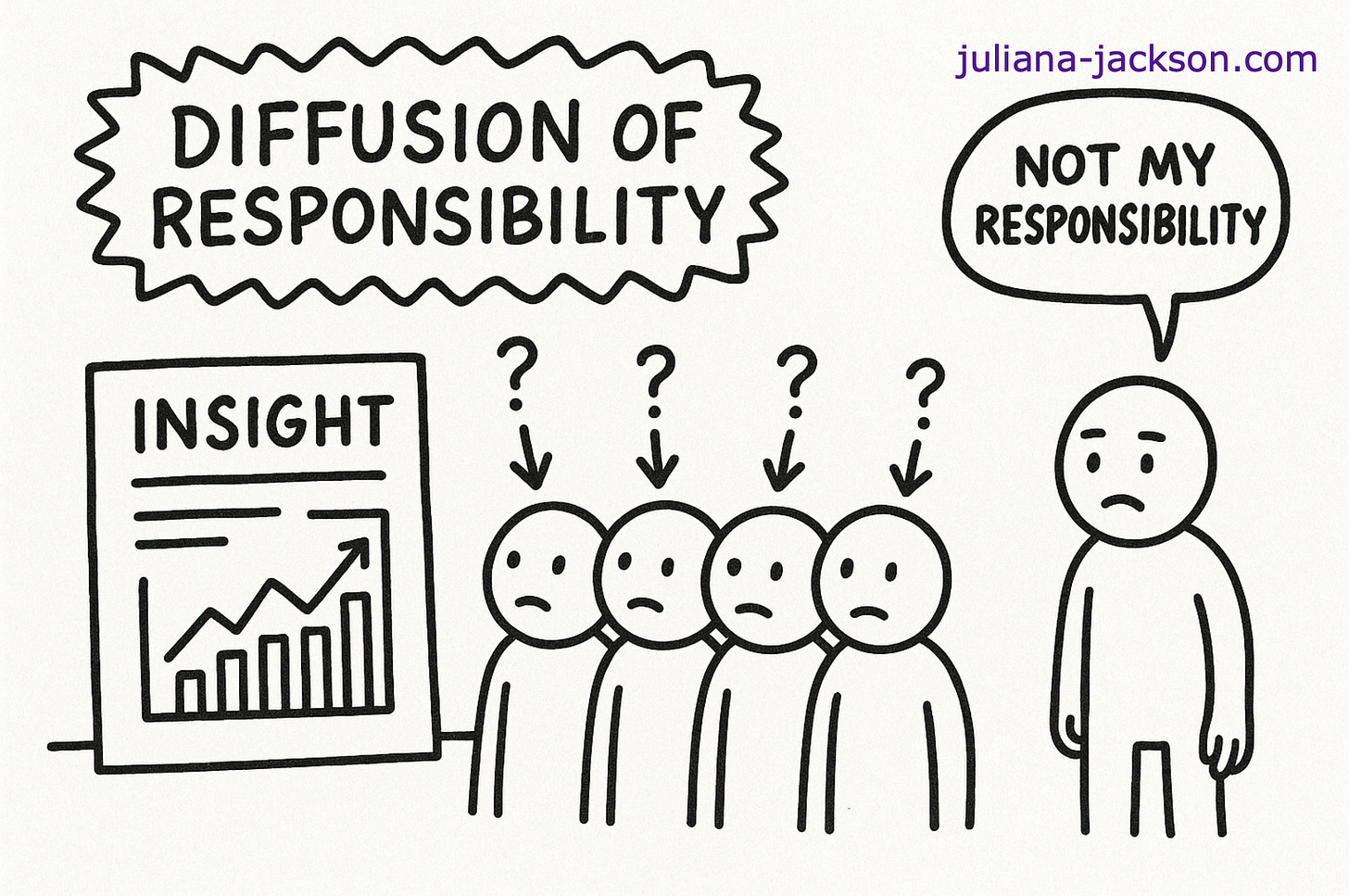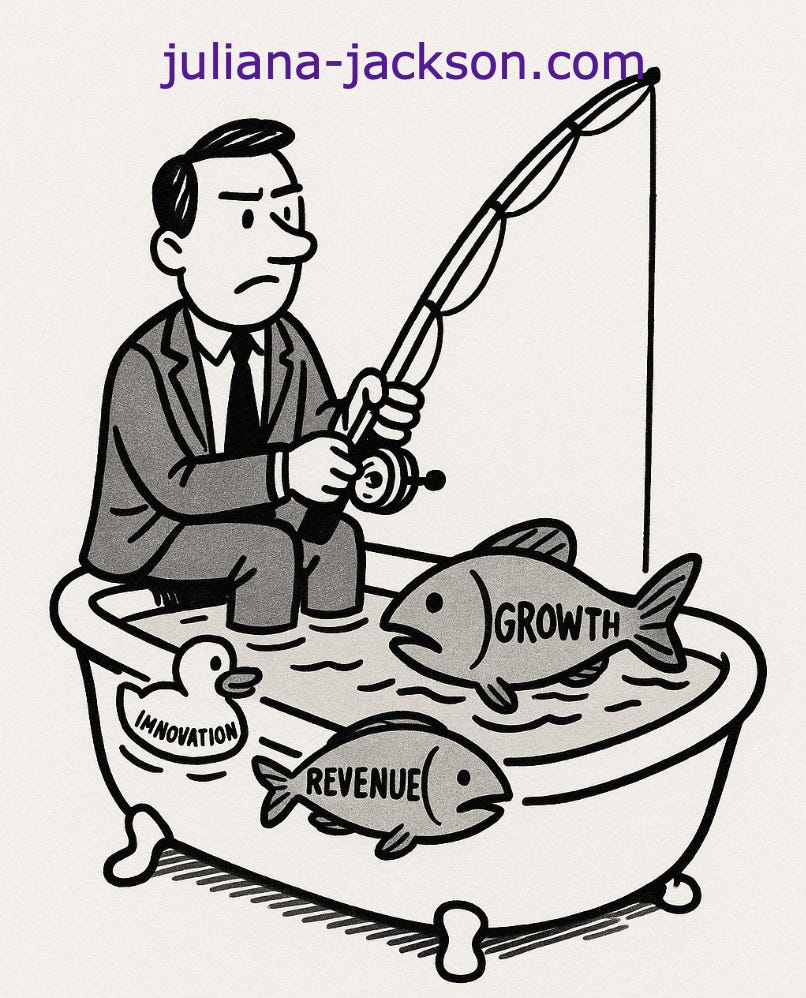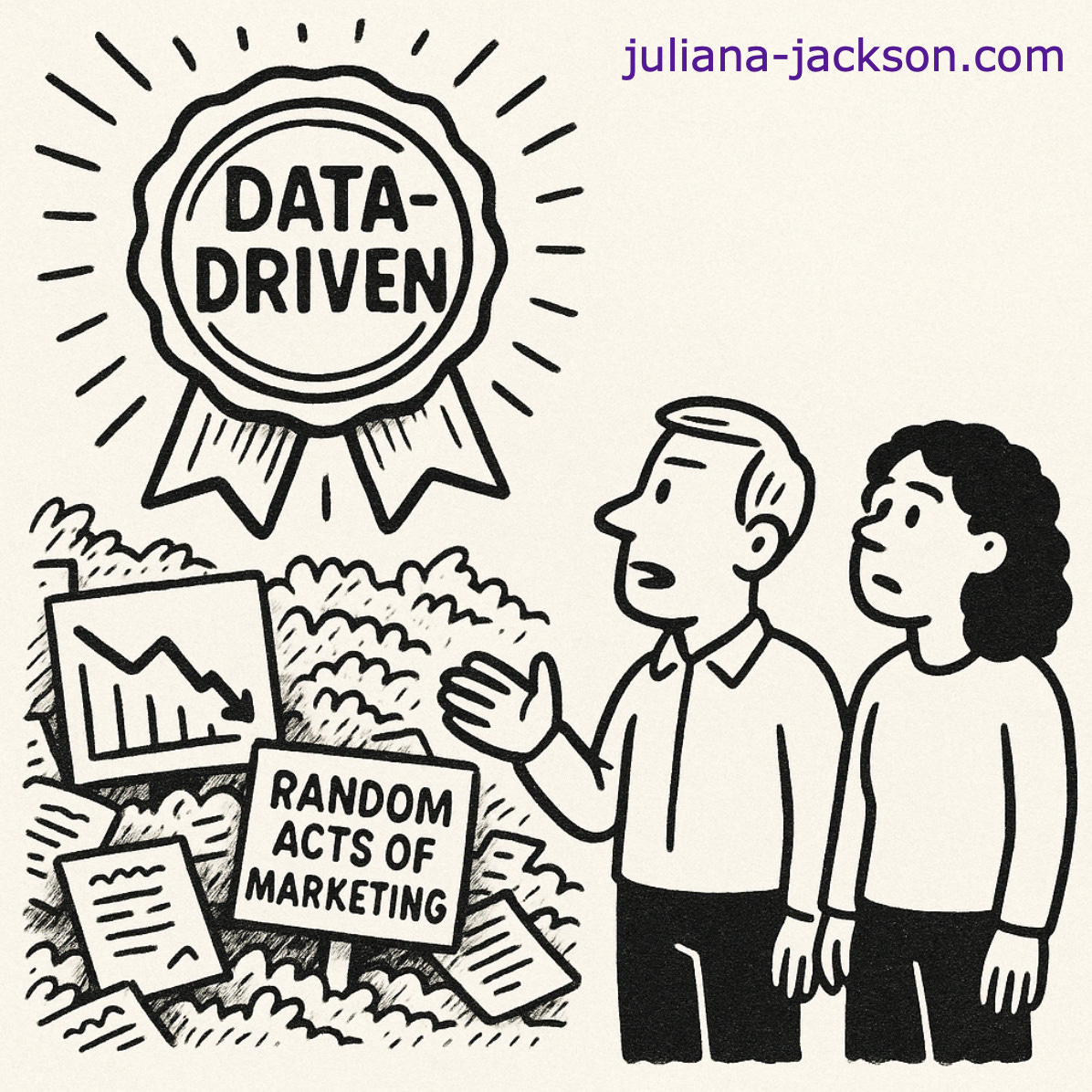Insights Without Owners Don't Move Organizations
Most orgs don’t lack data, they lack decision accountability. Here’s why that matters more than you think.
On my mind this week
Organizations rarely struggle due to a genuine lack of data or analytical capability. Instead, they struggle because the responsibility for decisions remains ambiguous, diffuse, or unassigned.
This lack of clear accountability goes beyond being an operational oversight, it's a systemic flaw that quietly erodes organizational effectiveness from within.
Insights become collective property, shared across teams and stored in well-maintained documentation, but they rarely translate into clear, owned decisions.
In such settings, organizations begin to equate… or better yet, confuse the availability of information with actual progress, mistaking visibility for impact and awareness for action.
And this my friends, is the core of all our problems as digital analysts.
This accountability vacuum where data goes to die is perfectly described by the psychological phenomenon known as diffusion of responsibility.
Diffusion of responsibility is a socio-psychological phenomenon when a person is less likely to take responsibility for action or inaction when other bystanders or witnesses are present.
Behavioral science consistently finds that the more people involved in decision-making, the less likely any individual will commit to decisive action. Like the classic, the more cooks are making a soup… the worse the soup will turn up.
And within organizations, the presence of multiple stakeholders reviewing data inadvertently leads to collective inaction. Each stakeholder assumes that another, perhaps with more seniority or specific expertise, will take charge, when in the end, no one takes charge.
This results in a culture in which every team member is intellectually engaged but practically disengaged. Unless accountability is explicitly assigned, collective knowledge leads to collective action paralysis.
This issue is compounded by the absence of clearly defined decision rights.
Many organizations are led by ambitious people, eager to launch new products, campaigns, and initiatives. Yet beneath this energy is chaos, no clear roles, no defined processes. They're fishing, spraying and praying, rather than strategizing.
Leaders expect momentum, but they've never built a mechanism to reward action or accountability. Decisions become delayed, passed around, or avoided entirely. When progress stalls, teams get blamed, but the underlying issue is structural, and remains. Without clear ownership, insights never translate into action.
Beyond The Mean
Analytics, in many organizations, has drifted from function into performance.
And it no longer exists to drive decisions, it exists to signal intelligence. And over time, that performance has been ritualized.
One pattern I’ve observed again and again (yes, spotting patterns is the job lol) is how easily data gets sidelined in environments that claim to value it.
RFPs are a perfect representation of this pattern. The narrative gets energy, the visuals get applause, the innovation gets buzz… and the data? A lonely slide at the end. Just added on, not integrated in the story at all. It’s there to signal due diligence, not to steer strategy.
And this isn't of course unique to RFPs. The same dynamics play out across sales decks, vendor pitches, quarterly reviews.
Data becomes ornamental. The presence of analytics is enough to claim credibility. Whether it changes anything is almost irrelevant.
Analytics teams deliver dashboards and reports, but the unspoken goal is often validation, not confrontation.
The reward loop is clear: make things look smart, keep friction low, don’t complicate decisions already in motion. The system implicitly favors polish over provocation, and analysts adapt accordingly.
This behavior exists and holds because sadly, the organization doesn't require analytics to matter.
Data is used as proof, not leverage. Insights are retrofitted into narratives that have already been approved.
And approval culture rewards aesthetics over accuracy. Insights often introduce risk or delay and that makes them inconvenient. This makes the demand shift toward clean stories and safe truths, metrics that confirm, not challenge.
The system teaches analysts to stay neutral. Push too hard, and you're a blocker. Ask uncomfortable questions, and you slow things down.
This is how analytics becomes a passive observer, not a strategic partner. And this not a skill problem it’s simply that org structures don’t reward action. In many organizations, analysts are promoted for producing work that looks sophisticated. Does it shift strategy though? Well, that’s someone else’s problem.
How can we close this accountability gap?
Addressing the absence of decision accountability requires more than aspirational statements about becoming data-driven.
When I hear data-driven I instantly get furious haha, because most people see it like a badge of honour. Like something that signals precision and intelligence when in fact, we are hoarding data more than ever.
Since 2021, we have hoarded more data than in the last thirty years.
The International Data Corporation (IDC) estimates that by end of 2025, the sum of all data in the world will be around 175 Zettabytes (one Zettabyte is 10^21 bytes). Most of that data will be unstructured, and only about 10% will be stored. Less will be analyzed. Actually, in 2020, only 0.5% of all world data was analyzed, and probably less was acted upon.
Disconnected data alone is estimated to cost organizations $4.7 trillion globally. And when I say disconnected data I am not thinking of it from an infrastructure POV and analytics tools and what not, but how this reflects the cumulative effect of insights that never turned into action.
Decision accountability requires a structural shift in how organizations treat insight, not as ambient knowledge to be shared, but as a directional input that NEEDS ownership by creating the right mechanisms that compel decisions to be made, tracked, and followed through.
Organizations must embed ownership at the moment insight is delivered. When a risk, opportunity, or directional recommendation surfaces, it should be assigned to an individual, not diffused across teams or left to circulate in dashboards and documents.
That assignment should be clear, time-bound, and linked to a specific outcome. If an organization cannot say, “this person is responsible for moving this forward,” the insight has already lost its relevance.Decision-making must also be ritualized. This means integrating decision checkpoints into operational rhythms: roadmap reviews, sprint planning, quarterly business reviews. These forums should evaluate not just what insights were surfaced, but what actions were taken as a result. When signals produce no response, the question shouldn’t be buried. It should be asked directly: “why didn’t this insight lead to movement?”
Incentives are a critical fault line. Many teams are still rewarded for output rather than outcome. When performance reviews ignore whether work changed decisions, neutrality becomes the safest move. Teams learn to deliver intelligence that impresses, not intelligence that shifts direction. Realignment means recognizing and rewarding the influence analytics has on actual choices, not just deliverables.
Decision latency should be treated as a core performance signal.
- “How long does it take from insight to action?”
- “How often does the organization hesitate, escalate, or stall?”
Most companies don’t track this, but they should. Just as we measure countless things, we should measure decision velocity. Delays don’t always point to incompetence but they often reflect avoidance, ambiguity, or misaligned accountability. Making this visible forces confrontation with what’s slowing teams down.
Of course, none of these interventions are instant fixes. They won’t eliminate ambiguity or remove the friction inherent to real decision-making.
But they do something essential: they make the gap harder to ignore.
They remove plausible deniability and force teams to answer a harder question, not “what do we know?” but “what did we do with what we knew?”
Until next time,
x
Juliana





